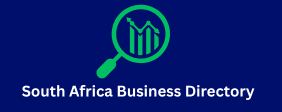A logo is often the most recognizable and How Do valuable asset of your brand. It visually represents your business’s identity, values, and reputation. Given its importance, protecting your logo from unauthorized use or copying by others is critical. Unauthorized duplication not only dilutes your brand but can lead to customer confusion, lost revenue, and legal disputes.
As a professional logo designer or agency, safeguarding your logo is part of the service you should offer or advise on. This article explains how logos can be protected, what measures designers take to minimize copying, and what steps you as a business owner can take to legally protect your logo.
Why Is Logo Protection Important? How Do
-
Brand Integrity: Protecting your logo preserves your brand’s unique identity and ensures customers associate your mark solely with your products or services.
-
Legal Rights: Without proper protection, you may have limited recourse if someone copies or uses your logo.
-
Market Differentiation: A protected logo prevents competitors from capitalizing on your brand equity or misleading consumers.
-
Financial Value: Your logo often has monetary value, especially as your business grows; protecting it safeguards your investment.
How Designers Help Prevent Logo Copying How Do
1. Creating Original and Unique Logos
The first defense against copying is an original, custom-designed logo. Professional designers avoid:
-
Using stock clip art or common templates
-
Copying elements from other logos or designs
-
Designing generic or overused symbols
Unique logos are less likely to be confused with logo designs service others and easier to protect legally.
2. Using Complex and Distinctive Design Elements
A logo that is distinctive in shape, color, typography, and composition is harder to replicate exactly. Designers employ:
-
Custom typography or hand-drawn elements
-
Unique color combinations (while respecting color psychology)
-
Clever symbolism or abstract shapes relevant to your brand
Distinctiveness discourages direct top features to look for in a t shirt design service copying and makes your logo stand out.
3. Providing Vector Files and High-Quality Originals
Professional designers supply vector files (AI, EPS, SVG), which are the master files for your logo. These files:
-
Are original, editable sources proving authorship
-
Allow you to produce high-quality versions for any use
-
Facilitate legal proof of ownership if disputes arise
Legal Protection of Your Logo How Do
While designers create your logo, legal protection is the responsibility of the business owner. Here are key steps:
1. Trademark Registration
Registering your logo as a trademark with the relevant government authority is the strongest legal protection. Trademark rights grant you exclusive business to consumer reviews use of your logo in connection with your goods or services.
-
Benefits:
-
Prevent others from using similar logos in your industry
-
Legal basis to enforce rights through cease and desist letters or lawsuits
-
Enhances brand value and market position
-
-
Process:
-
Conduct a trademark search to ensure your logo is unique
-
Use a trademark attorney or specialized service to navigate the process
-
2. Copyright Protection
Your logo is automatically protected by copyright law upon creation, provided it meets originality standards. Copyright protects the artistic expression but not the commercial use like trademarks do.
-
Note: Copyright is less effective in preventing others from using similar logos in commerce, making trademark protection essential.
3. Contracts and Agreements
When working with designers, ensure contracts specify:
-
You receive full ownership and rights to the logo upon project completion
-
Designers assign all copyrights and usage rights to you
-
Designers do not reuse or sell your logo to others
Proper legal documentation prevents future disputes over logo ownership.
Monitoring and Enforcing Your Logo Rights
1. Regular Monitoring
Stay vigilant by:
-
Monitoring online platforms, marketplaces, and social media for unauthorized logo use
-
Using image search tools (Google Reverse Image Search, TinEye) to find copies
-
Registering your trademark with customs or online brand protection services to prevent counterfeit goods
2. Enforcing Your Rights
If you discover unauthorized use:
-
Send cease and desist letters requesting removal or stopping use
-
Work with a trademark attorney for legal actions if necessary
-
Use platform reporting tools (e.g., social media takedown requests)
Early enforcement discourages repeat infringement and protects your brand.
Additional Tips to Protect Your Logo
-
Use Your Logo Consistently: Consistent use strengthens your brand’s recognition and legal standing.
-
Keep Documentation: Maintain files like contracts, design drafts, and correspondence showing your ownership timeline.
-
Educate Your Team and Partners: Ensure employees, vendors, and partners understand your logo’s importance and use it correctly.
-
Avoid Publicly Sharing Raw or Editable Files: Share only approved logo versions to prevent unauthorized alterations.
Conclusion
Protecting your logo from being copied by others involves a combination of creative, legal, and practical measures:
-
Start with a unique, original logo designed by professionals
-
Register your logo as a trademark for exclusive legal rights
-
Use copyright law and contracts to reinforce ownership
-
Monitor the market regularly for unauthorized use
-
Enforce your rights promptly and decisively when infringements occur
As a business owner, take proactive steps to safeguard this vital brand asset. And when
